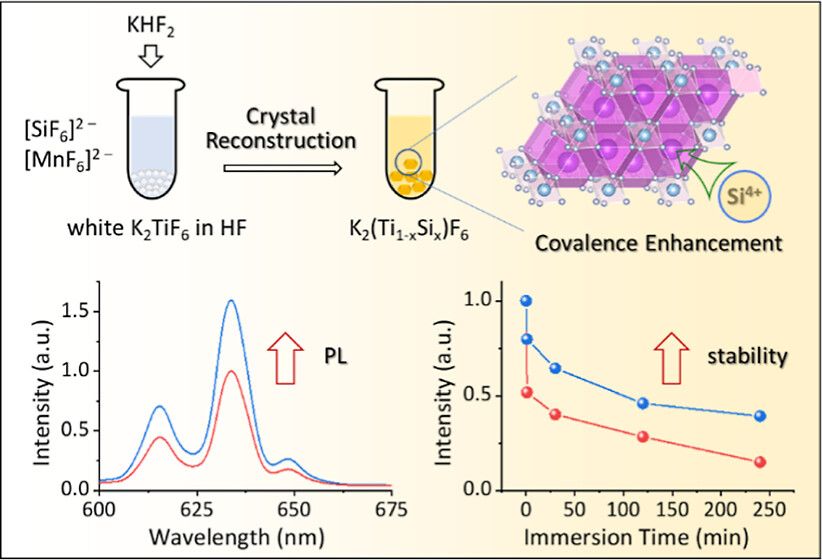Mn4+-activated fluoride red phosphors exhibit excellent luminescence properties. However, a persistent technical challenge lies in their poor moisture resistance. Current strategies primarily focus on surface modifications to effectively shield the [MnF6]2– species from water molecules while neglecting the underlying structure of the fluoride matrix. In this study, we introduce Si4+ and Ge4+ ions into the K2TiF6:Mn4+ crystal to create covalent fluoride solid solutions, namely, K2Ti1–xSixF6:Mn4+ and K2Ti1–yGeyF6:Mn4+, through crystal reconstruction. The findings reveal that the incorporation of Si4+ leads to increased particle size, enhanced luminescence intensity (by 40%), and improved moisture resistance. Furthermore, after undergoing 1000 h of aging at high temperature and high humidity conditions, the white LED featuring the K2Ti0.97Si0.03F6:Mn4+ phosphor demonstrates remarkable durability by retaining 90% of its initial luminous efficacy. This performance surpasses that of the device utilizing the K2TiF6:Mn4+ phosphor, which only retains 74% of its original efficacy. The crystal reconstruction method and covalent enhancement strategy proposed in this work contribute to enhancing the luminescence efficiency and moisture resistance of fluoride phosphors, thereby offering new insights for advancing the development of high-efficiency and highly stable white light LED devices.

第一作者:叶梦琳
通讯作者:周文理
发表期刊:Inorganic Chemistry
发表时间:2023-07-17
文章连接:https://pubs.acs.org/doi/10.1021/acs.inorgchem.3c01709
